Comets up close: Brief encounters with cosmic rovers
- Published
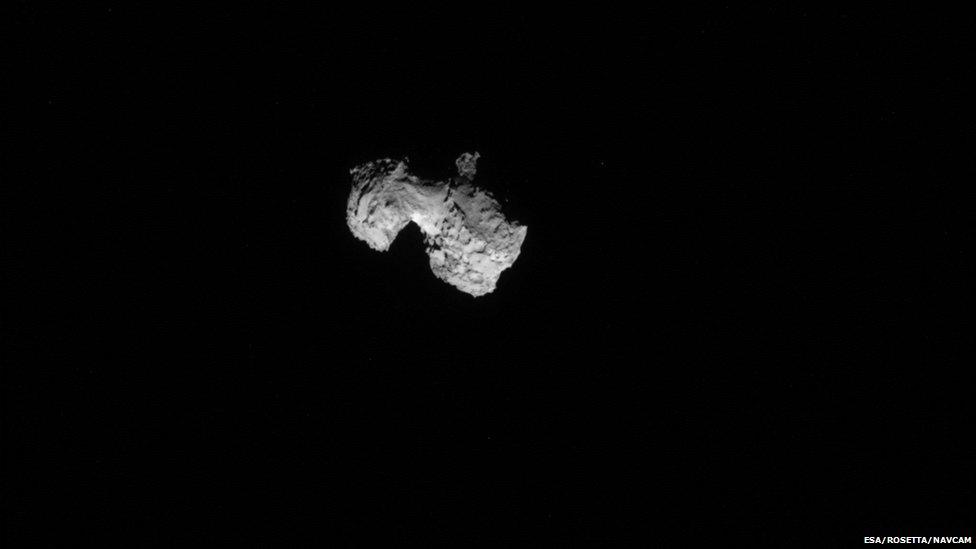
The upcoming rendezvous of the European Space Agency's Rosetta probe with Comet 67P/Churyumov–Gerasimenko is set to be the closest study ever made of a comet. Seen here from a distance of about 300km on Sunday 3rd August, Churyumov–Gerasimenko is approximately 4km across and is the sixth comet that we have encountered through the cameras of passing spacecraft. (Image credit: Esa/Rosetta/NavCam)

In March 1986, Esa's Giotto spacecraft passed within 600km of the famous comet 1P/Halley, which is about 15km across. This image was taken by Giotto's Halley Multicolour Camera, which was badly damaged later in the flyby. (Image credit: Esa/MPAe Lindau)
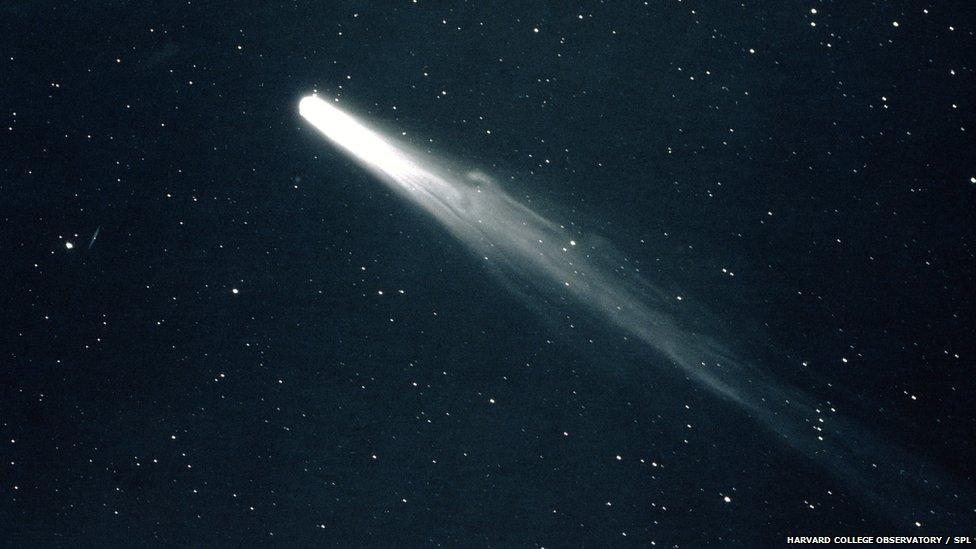
Although several spacecraft have paid it a fleeting visit, Halley's Comet is perhaps more familiar as a shape in the night sky, photographed here in Peru in 1910 using a 30-minute exposure. Because of its regular transits through the near Solar System (about every 75-76 years) it has been observed from Earth for centuries, and will next appear in 2061. (Image credit: Harvard College Observatory/Science Photo Library)
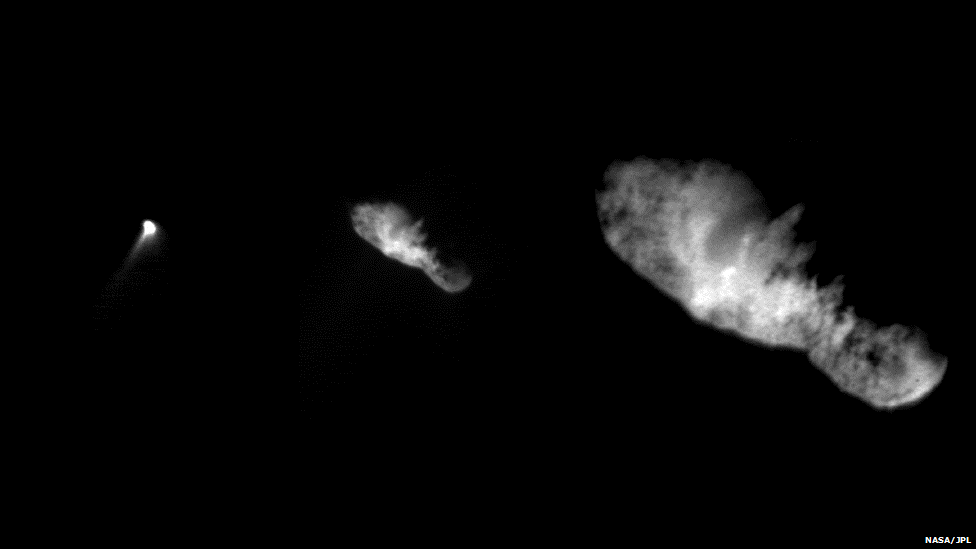
A 2001 fly-by of Comet 19P/Borrelly was a bonus for the Deep Space 1 mission, which had already flown past an asteroid and completed the testing of various new technologies before being steered toward the 8km bowling pin of Borrelly. The close-up shot on the right, taken from over 3,000km away, nonetheless showed some of the comet's terrain and was the clearest photo ever taken of a comet at the time. (Image credits: Nasa/JPL)
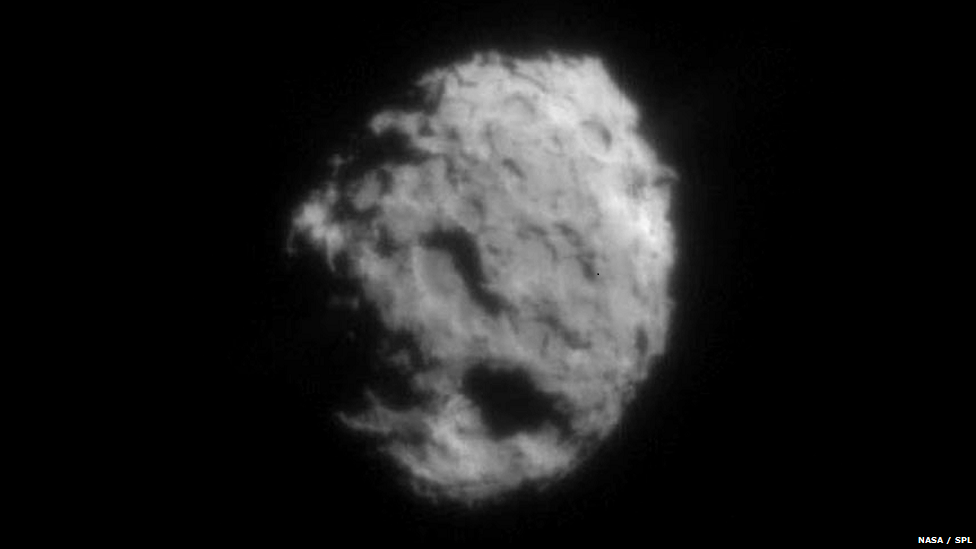
Nasa's Stardust mission flew past the 5km-wide Comet 81P/Wild in January 2004, collecting samples of the cloud of gas and dust that a comet produces as it approaches the Sun and warms up. This photo was taken at a distance of around 500km. The Stardust probe returned its bounty to Earth in 2006 and Nasa scientists later announced they had found the amino acid glycine in the comet's dust. (Image credit: Nasa/Science Photo Library)
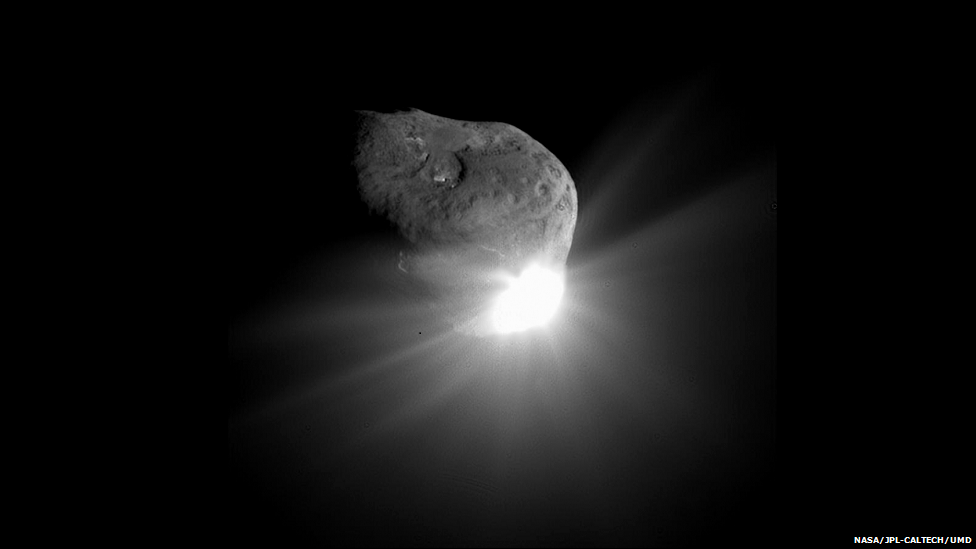
In July 2005, the Deep Impact mission successfully crashed its 370kg impactor into Comet 9P/Tempel in order to learn about its composition. This spectacular photo, taken 67 seconds after impact by the main Deep Impact flyby craft, shows scattered light from the collision as well as details of the 7.6km comet's surface, illuminated by the Sun. (Image credit: Nasa/JPL-Caltech/UMD)
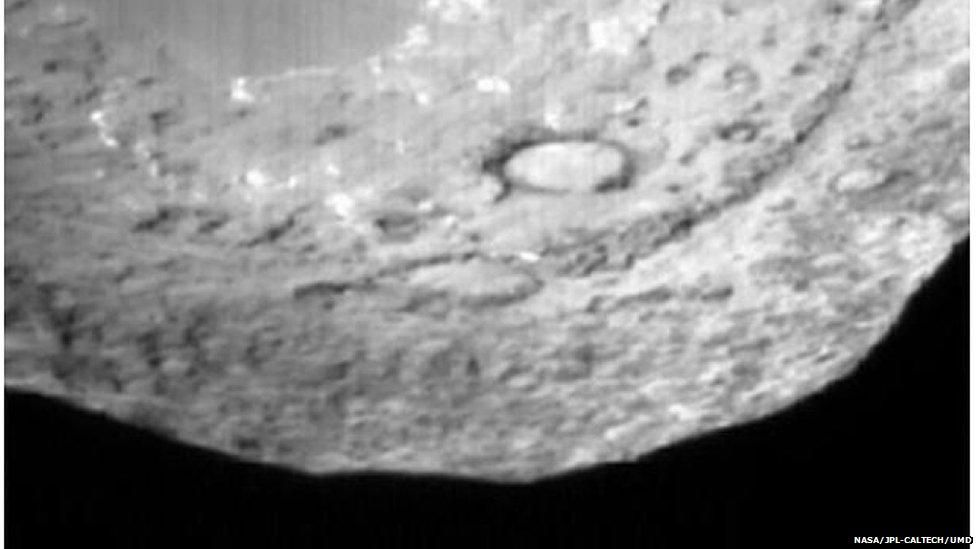
The impactor took this image of Tempel's surface just before it hurtled into the comet, travelling at over ten kilometres per second.
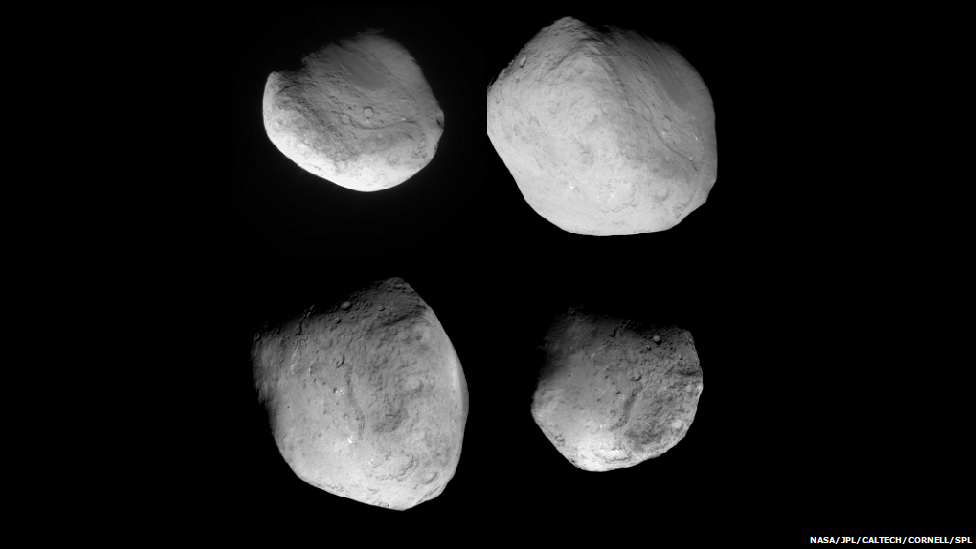
These beautiful images of Tempel were taken in 2012 when it received another visit, this time from the re-activated Stardust craft. This mission found evidence of water on the comet's surface and even sent back an image of the crater left by the Deep Impact probe. (Image credit: Nasa/JPL/CalTech/Cornell/Science Photo Library)
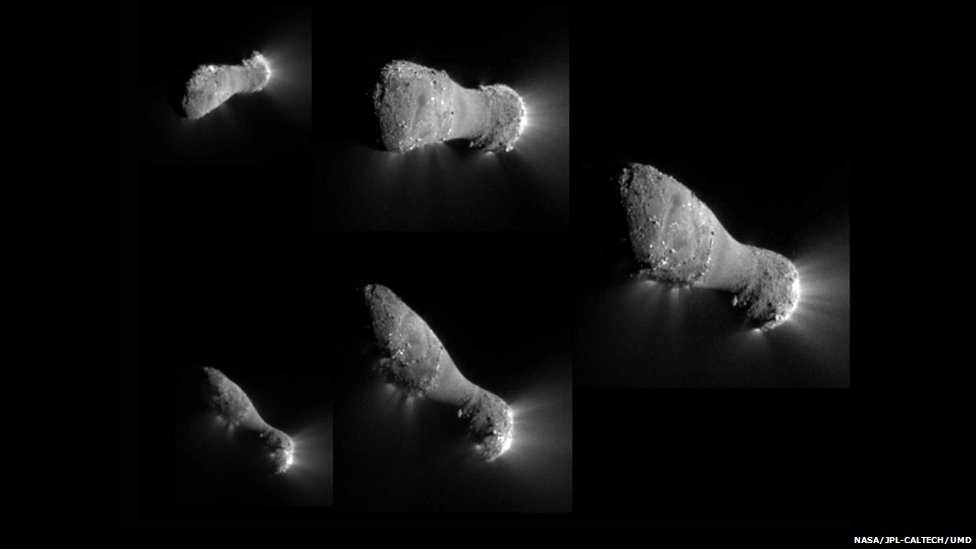
After its successful trip to 9P/Tempel, the Deep Impact spacecraft was redirected to fly past Comet 103P/Hartley. This series of images was taken in November 2010 as Deep Impact approached and flew under the 2.25km, peanut-shaped comet, passing within 700km. This was the fifth comet we had ever seen up close; Churyumov-Gerasimenko will be the sixth. The Rosetta mission plans to orbit and land on one of these small, icy constituents of our solar system for the very first time. (Image credit: Nasa/JPL-Caltech/UMD) Words by Jonathan Webb